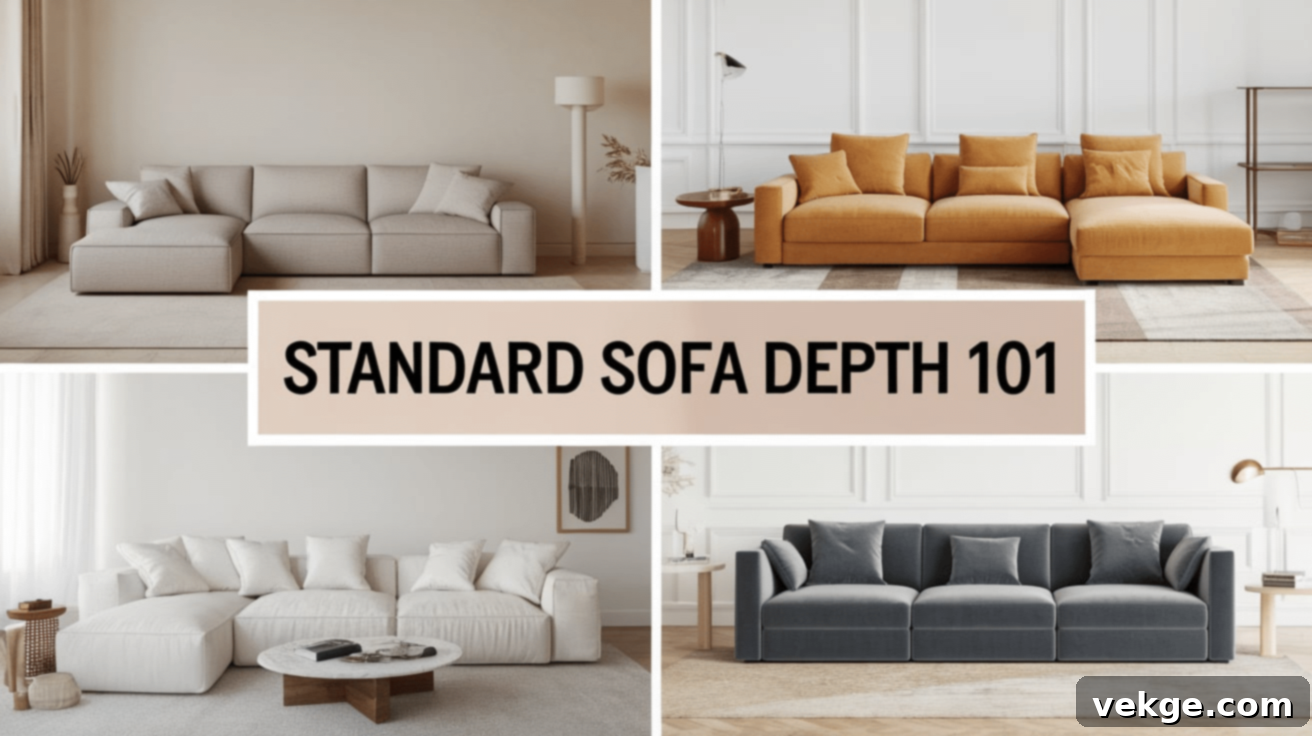The Ultimate Guide to Sofa Depth: Finding Your Perfect Fit for Comfort, Style, and Space
Choosing a new sofa is a significant decision for any home, influencing not only the aesthetics of your living space but also your daily comfort and lifestyle. Among the many factors to consider – fabric, color, style, and size – one crucial element often overlooked is sofa depth. This seemingly minor detail profoundly impacts how you experience your sofa, determining whether it becomes a haven for relaxation or an uncomfortable perch.
The depth of a sofa can significantly affect your posture, the ability to lounge comfortably, and how well the piece integrates into your room’s layout. If it’s too deep, you might find yourself constantly shifting to find support, potentially leading to slouching. Conversely, a sofa that is too shallow might not offer the luxurious comfort you desire for extended relaxation. While the standard sofa depth typically ranges between 36 to 40 inches, this can vary widely based on design, brand, and intended use. Understanding these variations is key to making an informed choice.
This comprehensive guide will explore everything you need to know about sofa depth. We’ll delve into the standard dimensions, explain how depth directly impacts your comfort and the functionality of your living room, and provide practical advice on how to choose and measure the ideal sofa depth for your specific needs and space. By the end, you’ll be equipped to select a sofa that perfectly balances comfort, style, and practicality for your home.
Understanding Sofa Depth and Its Paramount Importance

Sofa depth refers to the measurement from the very front edge of the seat cushion to the backrest. It’s distinct from the overall depth of the sofa, which includes the back frame, but it’s the seat depth that truly dictates your sitting experience. This dimension is a critical factor when selecting a sofa for your home because it directly influences two primary aspects: physical comfort and spatial harmony.
From a comfort perspective, the right depth ensures ergonomic support and allows for natural body positioning. If a sofa is excessively deep for your height, you might find your feet dangling or feel compelled to scoot forward, leaving your lower back unsupported. This can lead to uncomfortable slouching, poor posture, and even back pain over time. On the other hand, a sofa that is too shallow can restrict movement, making it difficult to find a comfortable lounging position, stretch out, or curl up. It might feel like you’re perched on the edge rather than sinking into a cozy embrace.
Spatially, sofa depth impacts the perceived size and flow of your room. A deep sofa can anchor a large living room, creating an inviting and luxurious feel. However, the same deep sofa in a smaller room can overwhelm the space, making it feel cramped and less navigable. The visual balance and practicality of movement within the room are heavily dependent on choosing an appropriate depth that complements the room’s dimensions.
Ultimately, selecting the correct sofa depth ensures you invest in a piece of furniture that not only looks great but also provides a comfortable and supportive experience tailored to your lifestyle and the layout of your home. It’s a foundational element that merits careful consideration during your furniture shopping journey.
Demystifying Standard Sofa Depth
When you embark on the journey of sofa shopping, understanding the concept of “standard” depth is incredibly helpful, as it provides a baseline for comparison. However, it’s important to remember that “standard” can be a flexible term, often influenced by design trends and regional preferences. Here’s a breakdown of what you typically encounter:
-
Typical Depth Range: The majority of standard sofas designed for general living spaces feature a seat depth between 36 and 40 inches. This range is considered standard because it generally accommodates a wide variety of body types and offers a good balance between upright sitting and relaxed lounging. It allows most adults to sit comfortably with their feet flat on the floor while also providing enough space to lean back and relax.
-
Shallower Sofas (Compact or Formal): Some sofas are specifically designed with a shallower depth, often ranging from 30 to 34 inches. These designs are particularly well-suited for individuals who prefer a more upright sitting posture, such as for reading, conversation, or formal entertaining. They are also an excellent choice for smaller living rooms, apartments, or entryways where space is at a premium and a deeper sofa would feel disproportionate or impede traffic flow.
-
Deeper Sofas (Lounge or Oversized): For those who prioritize ultimate relaxation and expansive lounging, sofas with a depth of 40 inches or more are ideal. These oversized sofas provide ample room to stretch out, recline, or even lie down comfortably. They are perfect for movie nights, napping, or simply sinking into luxurious comfort. However, their generous dimensions mean they are best suited for larger rooms where they won’t dominate the space or obstruct pathways. Shorter individuals might find themselves needing extra throw pillows for back support on such deep sofas.
-
Sectionals and Recliners: These specialized sofa types often defy typical standard ranges. Sectionals, particularly the chaise or corner sections, frequently feature deeper seats (sometimes exceeding 45 inches) to maximize lounging potential. Recliners, by their very nature, are designed for adjustable depth, offering varying seated and reclined positions that can significantly alter their footprint and comfort profile.
-
Sofa Styles and Era Influences: The prevailing style of a sofa can also dictate its depth. Traditional and classic sofa designs, such as Chesterfield or English Roll Arm, often boast deeper seats, harkening back to eras of leisurely lounging. In contrast, many modern and minimalist sofas tend to feature shallower depths, aligning with a more streamlined aesthetic and a preference for upright, structured seating.
Ultimately, choosing the right depth goes beyond adhering strictly to “standard.” It’s about aligning the sofa’s dimensions with your personal comfort preferences, typical use, and the practical constraints of your living space. Always remember to test the depth yourself before making a final decision.
How Sofa Depth Transforms Your Comfort Experience
The depth of a sofa is not just a measurement; it’s a direct determinant of your comfort level and how you interact with the furniture. It influences everything from your posture to your ability to fully relax. Let’s explore how different depths impact comfort:
1. The Allure of Deeper Sofas
A deeper sofa is synonymous with expansive comfort and ultimate relaxation. It allows you to sit back fully, extend your legs, and truly sink into the cushions. This makes deep sofas exceptional for:
- Lounging and Napping: There’s ample room to curl up, stretch out, or even take a short nap. This makes them perfect for movie marathons, reading long novels, or simply unwinding after a long day.
- Family Gatherings: They often accommodate more people comfortably, providing a cozy space for families to gather and relax together.
However, the generosity of a deep sofa can present challenges. Shorter individuals might find themselves struggling to keep their feet on the floor, leading to a feeling of “sinking” too far back. This can necessitate the use of extra throw pillows for lumbar support or a footrest to achieve a comfortable, upright position. Moreover, in smaller rooms, deep sofas can physically and visually dominate, making the space feel cramped and less functional.
2. The Practicality of Shallower Sofas
Sofas with a shallower depth cater to a different set of comfort needs, primarily favoring a more active and upright sitting posture. They are particularly well-suited for:
- Formal Settings: Ideal for entertaining guests, conversations, or environments where a more structured sitting position is preferred.
- Ergonomic Support: They naturally encourage better posture by allowing your feet to remain flat on the floor and your back to be fully supported against the backrest without slouching. This can be particularly beneficial for individuals with back issues or those who find deep sofas uncomfortable.
- Smaller Spaces: Their compact footprint makes them excellent for apartments, offices, or auxiliary seating areas where maximizing space is crucial.
The trade-off with shallower sofas is often the reduced capacity for sprawling out. While great for focused sitting, they may not offer the same luxurious “sink-in” feel that deeper sofas provide for extended lounging or napping.
3. The Critical Role of Posture and Support
The relationship between sofa depth, posture, and support is paramount. An ill-suited sofa depth can have long-term consequences for your body:
- Too Deep: Forces you to slouch to reach the backrest, or perch uncomfortably on the edge to keep your feet on the floor. Both scenarios strain your lower back and compromise spinal alignment. For some, it can feel like constantly sliding forward, requiring conscious effort to maintain a comfortable position.
- Too Shallow: Can make you feel like you’re perching rather than sitting, leaving your legs unsupported from the knees down, or causing undue pressure on your thighs. This can lead to discomfort, especially during longer sitting sessions, and prevent your back from fully engaging with the sofa’s support system.
Choosing the right depth ensures that your hips are adequately supported, your feet can comfortably reach the floor (or be easily propped up), and your spine maintains its natural curve. This alignment promotes healthier sitting habits, reduces strain, and significantly enhances overall comfort, allowing you to enjoy your sofa for hours without discomfort.
Navigating the Choice: How to Select and Measure Sofa Depth
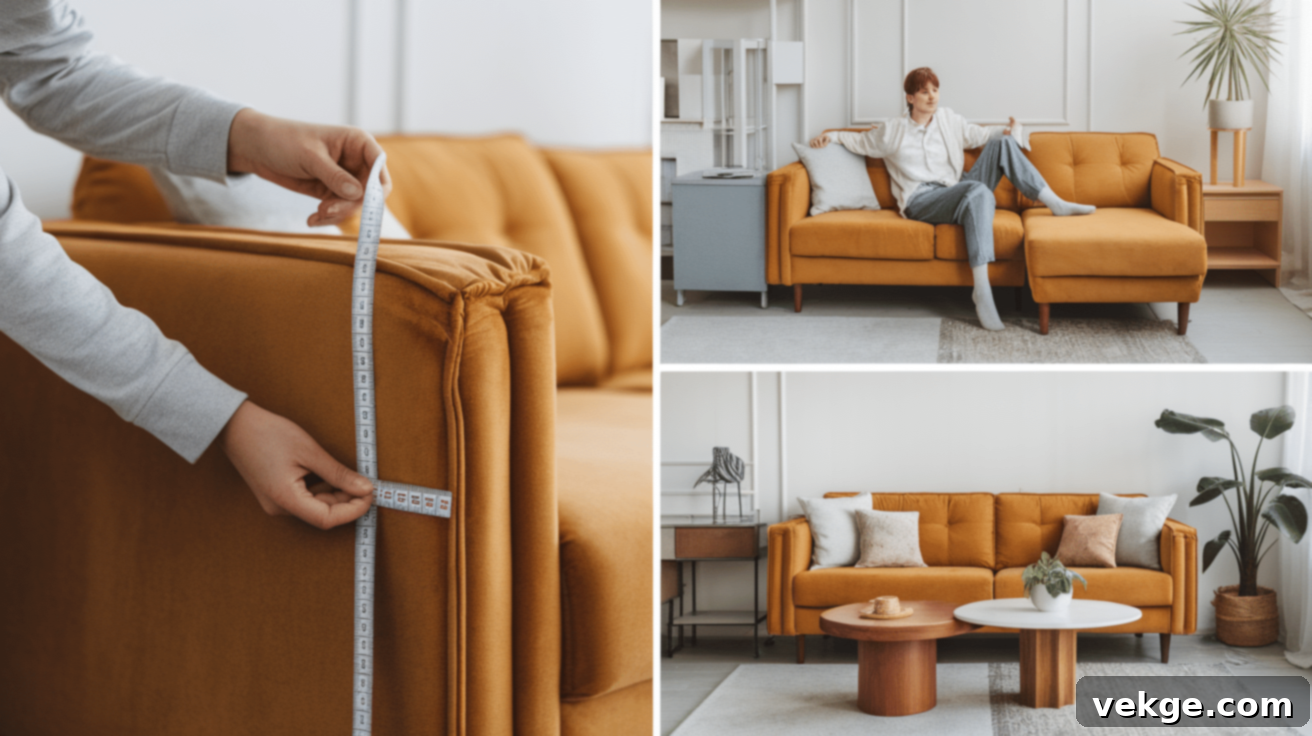
Selecting the perfect sofa depth requires a thoughtful approach that integrates personal comfort with practical spatial considerations. It’s not just about what looks good, but what feels right and functions best in your home. Here’s a detailed guide to help you make an informed decision and measure accurately:
1. Prioritize Your Comfort Needs and Sitting Habits
Begin by honestly assessing how you (and your family) typically use a sofa. This is the most crucial step:
- For the Ultimate Lounger: If your ideal evening involves sprawling out, curling up with a book, or movie marathons, a deeper sofa, typically around 38 to 40 inches or more, will offer the necessary room and luxurious feel. Consider your height – taller individuals generally prefer deeper seats, while shorter people might need extra cushions for support.
- For the Upright Sitter: If you use your sofa primarily for engaging in conversations, reading in an active posture, or working on a laptop, a shallower sofa, ranging from 30 to 36 inches, will provide better back support and allow your feet to rest comfortably on the floor. This is also often preferred by older individuals or those with certain mobility issues.
- Family Considerations: If multiple people will be using the sofa, consider their varying heights and preferences. A medium depth might be a good compromise, or consider adding versatile throw pillows to accommodate different needs.
2. Analyze Your Room Size and Layout
The physical dimensions of your living space are critical. A sofa that’s too deep for the room can create an unbalanced, cramped, and awkward environment:
- Small to Medium Rooms: In compact living areas, a shallower sofa (30-36 inches) is often the best choice. It ensures that the room maintains an open, airy feel, prevents overcrowding, and allows for comfortable movement around the furniture. It visually maximizes the available floor space.
- Large, Open-Plan Spaces: Generous rooms can comfortably accommodate deeper sofas (38-40+ inches) or even oversized sectionals. These larger pieces can help define seating zones, fill expansive areas, and create a sense of grandeur and inviting warmth without making the space feel cluttered.
- Traffic Flow: Always consider how people will move around the sofa. Ensure there’s enough clearance (ideally 30-36 inches) between the sofa and other furniture or walls, regardless of depth.
3. Master the Art of Measuring Sofa Depth
Accurate measurement is non-negotiable, both for the sofa itself and for ensuring it fits into your home:
- Seat Depth: To measure the seat depth, use a sturdy tape measure. Start from the front edge of the seat cushion and extend the tape straight back to where the backrest begins. This is the crucial measurement for your comfort.
- Overall Depth: Don’t forget to measure the sofa’s overall depth, which includes the back frame, from the very front to the very back of the entire piece. This dimension is vital for checking if it will fit through doorways, hallways, and stairwells during delivery.
- Consider Cushions: Remember that plush, loose back cushions can sometimes reduce the effective sitting depth, while firm, fixed cushions maintain it more consistently.
4. The Golden Rule: Test It Out!
Whenever possible, physically sit on the sofa before purchasing. Online shopping offers convenience, but nothing replaces the in-person test:
- Sit Naturally: Sit as you normally would – lean back, slouch a little, try to cross your legs, and see how your feet touch the floor.
- Check Support: Does your back feel adequately supported? Do your knees bend at a comfortable 90-degree angle if your feet are flat? Do you feel like you’re sinking too far or perching precariously?
- Bring Companions: If you share your home, bring family members to test it too. Different body types will experience the same depth differently.
- Online Purchases: If buying online, meticulously read reviews, check the store’s return policy, and consider ordering fabric swatches to get a feel for the material. Many reputable online retailers offer detailed dimensions and even 3D models to help visualize the fit.
5. Integrate Sofa Style with Depth
The aesthetic style of a sofa often dictates its inherent depth characteristics:
- Traditional Styles: Designs like Chesterfield, English Roll Arm, or Grandmillennial sofas often feature deeper seats, encouraging a relaxed, formal lounge.
- Modern & Contemporary Styles: Many minimalist or mid-century modern sofas lean towards shallower depths, emphasizing clean lines and a more structured, upright seating experience.
- Transitional Styles: These pieces offer a blend, often falling into the standard 36-40 inch range, providing versatility in both traditional and contemporary settings.
Choosing and measuring sofa depth might seem like a minor detail, but it’s a foundational step towards creating a truly comfortable, functional, and aesthetically pleasing living space. By following these simple yet crucial steps, you’ll be well on your way to finding the perfect fit for your home.
Standard Sofa Depths for Diverse Seating Types
The “standard” depth of a sofa isn’t a one-size-fits-all metric. It fluidly adapts based on the specific type and purpose of the seating. Understanding these variations is key to choosing a piece that aligns with your lifestyle and space. Here’s a breakdown of how depth commonly varies across different sofa categories:
1. Standard Sofas (Three-Seater, Two-Seater)

- Depth: Typically ranges between 36 and 40 inches. This range often refers to overall depth but the seat depth will be within similar parameters.
- Best For: Everyday versatile use. These sofas strike a balance between providing comfortable seating for sitting upright and offering enough room to recline slightly. They are designed to suit the general needs of most households, providing adequate support without being overly deep or shallow. Ideal for living rooms where a mix of activities, from casual conversation to light lounging, takes place.
2. Loveseats
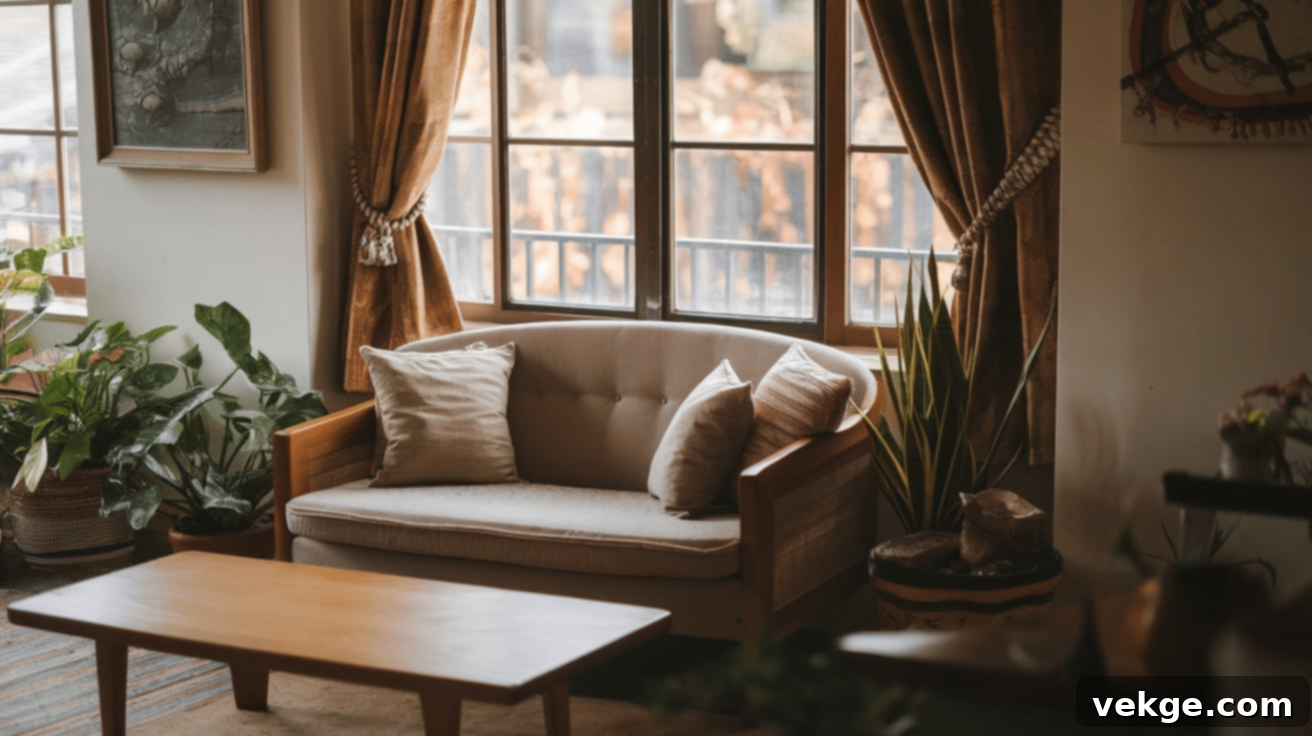
- Depth: Generally a bit shallower and more compact than full-size sofas, usually around 30 to 36 inches.
- Best For: Smaller spaces, cozy nooks, or as supplementary seating. Loveseats are designed to comfortably seat two people without taking up excessive floor space. Their more compact depth makes them perfect for apartments, bedrooms, or areas where you need a functional and intimate seating option that doesn’t overwhelm the room. They offer comfort for close-sitting but aren’t typically designed for extensive lounging.
3. Sectional Sofas
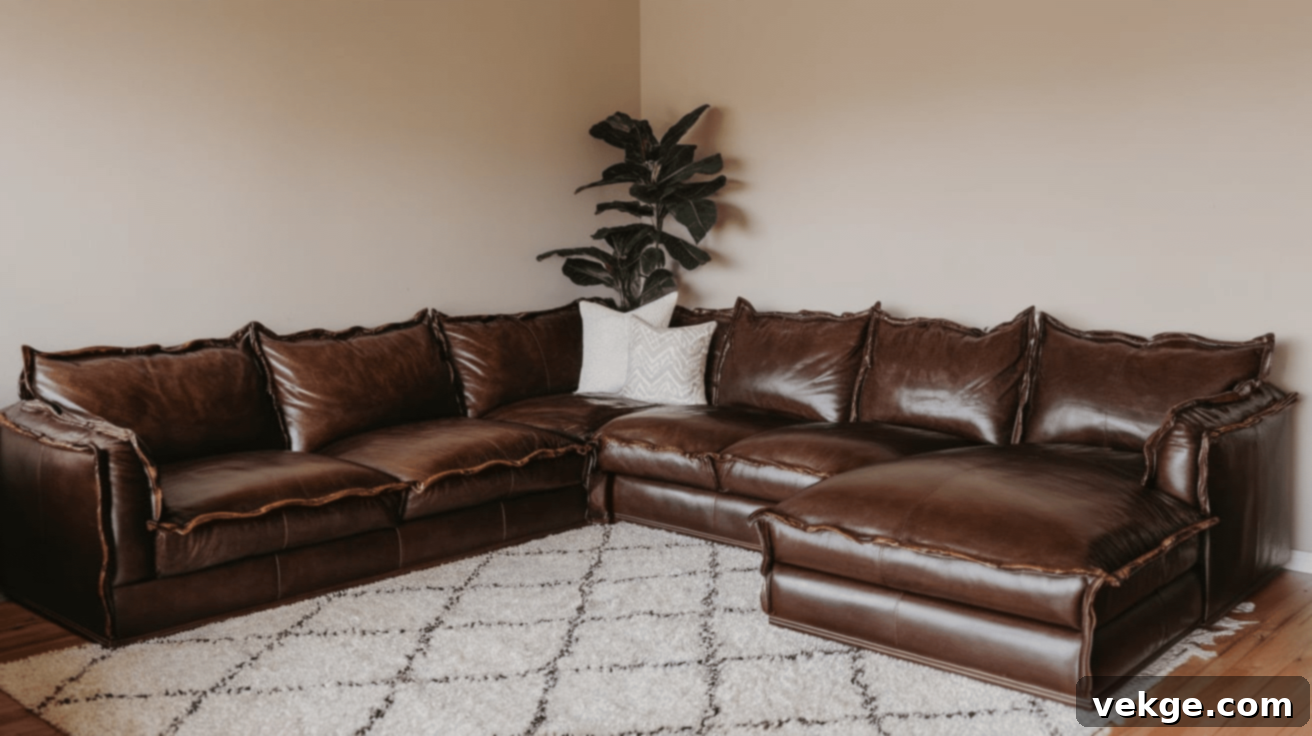
- Depth: Highly variable depending on the specific configuration and style, but often deeper than regular sofas. Depths can range from 38 inches to well over 45 inches, especially in chaise or corner sections.
- Best For: Large family rooms, open-concept living areas, and maximizing lounging space. Sectionals are the epitome of casual comfort, designed for sprawling out, entertaining large groups, and creating a cohesive, multi-functional seating arrangement. The deeper sections encourage full relaxation and provide ample room to stretch out or share.
4. Recliners (and Reclining Sofas)
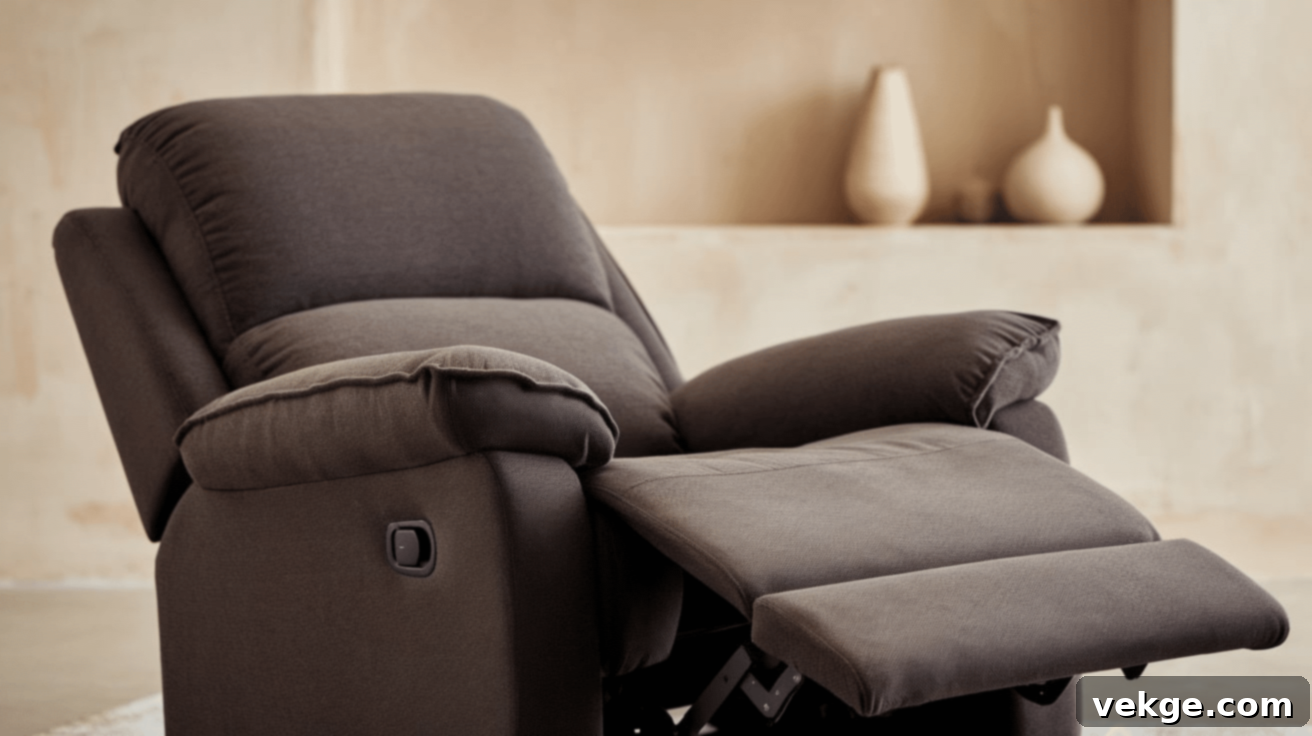
- Depth: While the seated depth might be within a standard range, recliners are inherently designed for adjustable depth, extending significantly when fully reclined. Seated depths can vary, but generally allow for comfortable stretching, often from 38 inches up to 60+ inches when extended.
- Best For: Ultimate personalized comfort and relaxation. Recliners are purpose-built for unwinding, offering the ability to adjust your seating position from upright to nearly flat. The depth is engineered to support the body in various states of repose, making them ideal for individuals seeking ergonomic support, napping, or simply putting their feet up.
5. Chaise Lounges
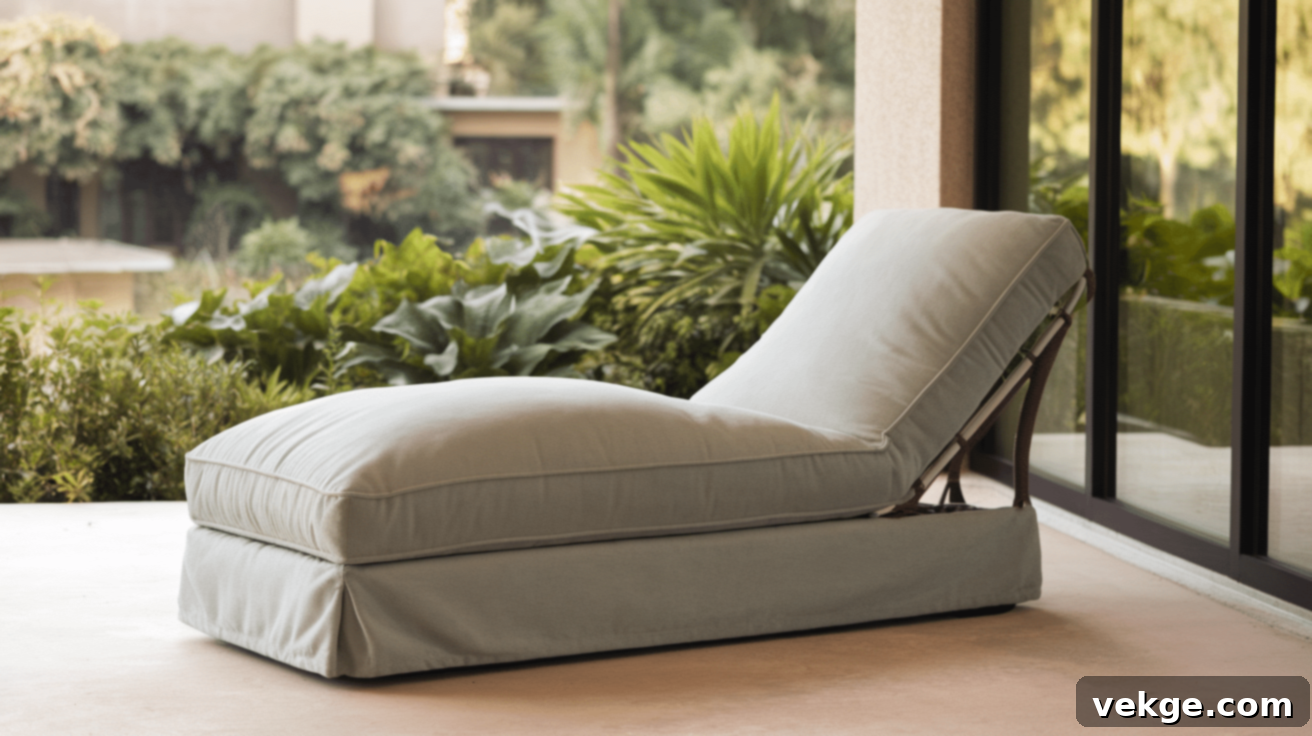
- Depth: Characterized by their extended length, chaise lounges are inherently very deep, typically starting at 40 inches and often exceeding 60 inches.
- Best For: Dedicated lounging, napping, or elegant accent seating. A chaise lounge is essentially a long chair designed to support the entire body, allowing you to stretch out your legs fully. They evoke a sense of luxury and are perfect for a quiet corner or as a focal point in a larger room, providing an unmatched personal relaxation experience.
6. Sleeper Sofas (Sofa Beds)
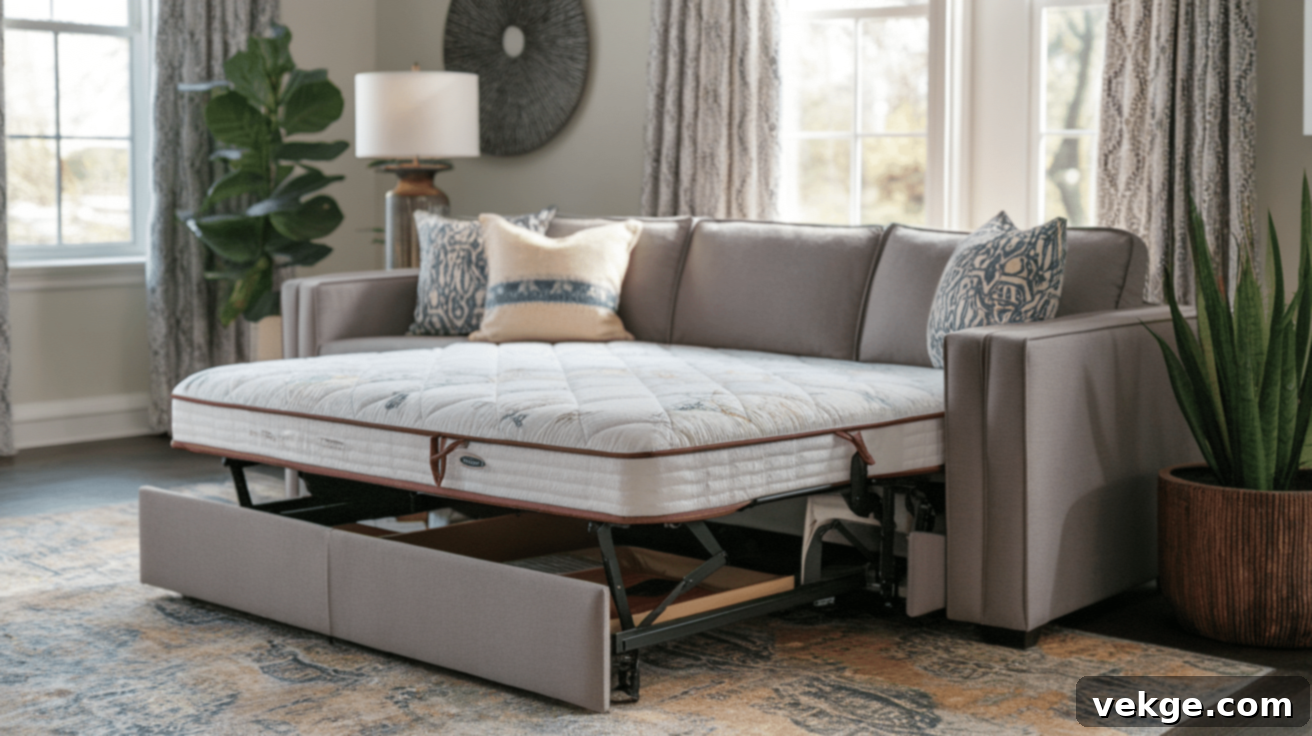
- Depth: Sleeper sofas are designed for dual functionality, often requiring a slightly deeper frame to house the mattress mechanism. Expect seated depths around 36 to 40 inches.
- Best For: Multi-purpose rooms, guest rooms, or smaller living spaces where extra sleeping arrangements are needed without sacrificing the comfort of a regular sofa. The depth must accommodate both comfortable sitting and the structural integrity required for a functional bed, offering a practical solution for overnight guests.
7. Futons
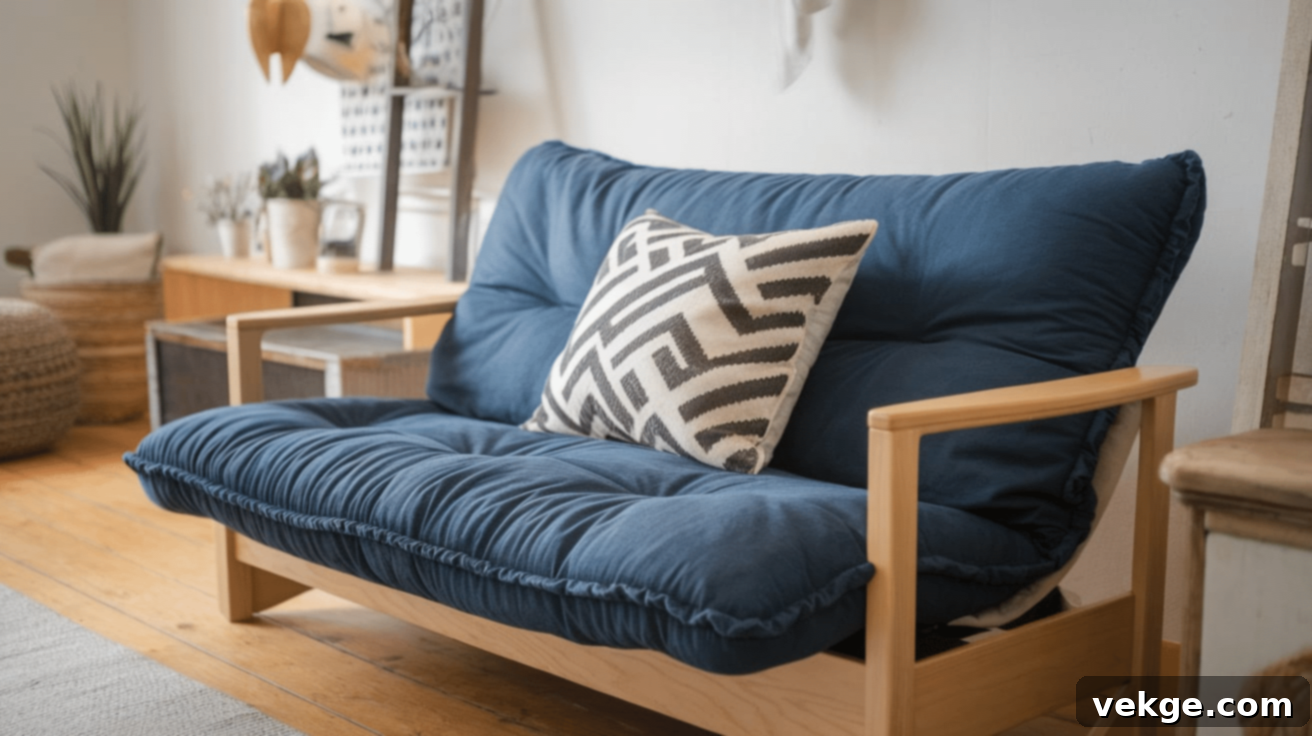
- Depth: Generally shallower and more streamlined, with seated depths usually ranging from 30 to 36 inches.
- Best For: Casual use, dorm rooms, apartments, or small guest rooms where versatility and compact design are priorities. Futons are designed to easily convert from a sofa to a bed, making their depth efficient for both functions while maintaining a smaller footprint suitable for tight spaces. They offer a more firm and upright seating experience.
As you can see, the diversity in sofa types directly correlates with a variety of depths, each engineered to serve a specific purpose and cater to different comfort expectations and spatial requirements. By considering how each type of sofa is intended to be used, you can better match its depth to your personal needs and home environment.
Common Mistakes to Steer Clear Of When Choosing Sofa Depth
The quest for the perfect sofa depth can be fraught with missteps if you’re not careful. Avoiding these common errors will ensure you make a choice you won’t regret:
- Underestimating Room Size (or Overestimating): One of the biggest mistakes is choosing a sofa depth that is disproportionate to your room. A deep, sprawling sectional might look inviting in a showroom, but it can quickly overwhelm a small living room, making it feel cramped and difficult to navigate. Conversely, a very shallow sofa in a vast open-plan space might look lost and fail to create the cozy anchor you desire. Always measure your space thoroughly and visualize the sofa’s footprint within it.
- Neglecting the “Sit Test”: Many people fall in love with a sofa’s aesthetic and purchase it without properly sitting in it. A sofa can look beautiful, but if its depth doesn’t suit your body, it will never be truly comfortable. Always conduct a thorough “sit test” – lean back, put your feet up, try sitting upright, and ensure it feels right for your typical use.
- Ignoring Your Body Type and Posture Preferences: Your height, leg length, and preferred sitting posture are critical. Taller individuals often need deeper seats to avoid feeling cramped, while shorter individuals might find deep sofas lead to dangling feet and unsupported backs. Similarly, if you have back issues or prefer sitting upright, a shallower sofa is often more ergonomic than a deep one that encourages slouching. Don’t let trends dictate what’s comfortable for your unique body.
- Forgetting the Primary Function: What will be the main purpose of your sofa? If it’s for frequent, casual lounging, napping, and movie nights, a deeper sofa is generally superior. If it’s intended for more formal conversations, reading, or as secondary seating in a high-traffic area, a shallower depth might be more appropriate. A mismatch between function and depth will lead to constant dissatisfaction.
- Overlooking Delivery Logistics: It’s not just about fitting the sofa into your room, but also getting it into your home. A very deep sofa, especially combined with its length, might not fit through narrow doorways, hallways, or up staircases. Always measure all access points before making a purchase.
By actively avoiding these common pitfalls, you can confidently select a sofa that not only looks fantastic but also delivers unparalleled comfort and functionality, seamlessly integrating into your home and lifestyle for years to come.
Conclusion
Choosing the right sofa depth is far more than a technical specification; it’s a foundational decision that impacts the comfort, functionality, and aesthetic harmony of your living space. From the moment you sink into its cushions, the depth of your sofa dictates your posture, your ability to relax, and the overall feel of your room.
A deeper sofa, typically ranging from 38 to 40 inches or more, offers an inviting haven for extended lounging, napping, and family gatherings, making it perfect for those who prioritize plush comfort. However, its generous dimensions demand a larger room to avoid feeling cramped. Conversely, a shallower sofa, often between 30 to 36 inches, excels in providing ergonomic support for upright sitting, ideal for conversation, reading, or formal settings. It’s also an invaluable choice for smaller living areas where maximizing space is essential.
To make the smartest choice, begin by honestly assessing your personal comfort needs and how you intend to use the sofa. Meticulously measure both your room and the prospective sofa’s dimensions, including all access points for delivery. Most importantly, always conduct a thorough “sit test” to ensure the depth aligns perfectly with your body and preferred sitting style. Remember that factors like your height, the sofa’s style, and even the type of back cushions can influence the perceived and actual comfort of any given depth.
Whether your heart is set on a sprawling, deep sectional for ultimate relaxation or a sleek, shallow loveseat for an intimate setting, the key lies in an informed decision. By carefully considering your lifestyle, spatial constraints, and personal comfort preferences, you can select a sofa that not only complements your home’s decor but also transforms your living area into a truly comfortable and enjoyable sanctuary. Take your time, explore your options, and remember that the perfect sofa is the one that genuinely fits your needs and makes you feel utterly at home.
Frequently Asked Questions About Sofa Depth
How do I accurately measure sofa depth?
To measure the essential “seat depth” of a sofa, use a tape measure and extend it from the very front edge of the seat cushion straight back to where the backrest begins. For the “overall depth” (crucial for delivery), measure from the absolute front of the sofa to the very back of its frame, including any protruding elements like a high backrest.
Can sofa depth truly affect my posture and back health?
Absolutely. The depth of a sofa plays a significant role in your posture. A sofa that is too deep can cause you to slouch or push your hips forward, leading to lower back strain and poor spinal alignment. Conversely, a sofa that is too shallow might leave your legs unsupported or make you feel like you’re perching, also leading to discomfort. The ideal depth allows your feet to rest flat (or comfortably supported) and your back to be fully supported against the backrest.
Does sofa depth vary significantly among different types of sofas?
Yes, sofa depth varies considerably depending on the type and design. For instance, sectionals and recliners often feature deeper seats to maximize lounging potential, while loveseats, futons, and some modern styles tend to be shallower to suit smaller spaces or a more upright sitting preference. Always check the specific dimensions for each sofa type you are considering.
Is it possible to adjust or change the depth of a sofa I already own?
Generally, the structural depth of a sofa cannot be changed once it’s manufactured. However, you can make minor adjustments to the *perceived* comfort or effective sitting depth. For a deep sofa, adding large throw pillows or lumbar cushions can reduce the effective depth and provide more back support. For a shallower sofa, removing some back cushions might slightly increase the sitting depth, though this is less common. For a more significant change, custom furniture options are available, but typically, a new sofa purchase would be required.
What is the ideal sofa depth for a tall person versus a short person?
Taller individuals (e.g., over 6 feet) generally find deeper sofas (40 inches or more) more comfortable, as they provide adequate leg room and prevent knees from being overly bent. Shorter individuals (e.g., under 5’4″) often prefer shallower sofas (30-34 inches) where their feet can comfortably reach the floor, or they don’t feel “swallowed” by the seat. For deeper sofas, shorter individuals may need to use footrests or back pillows for proper support.
